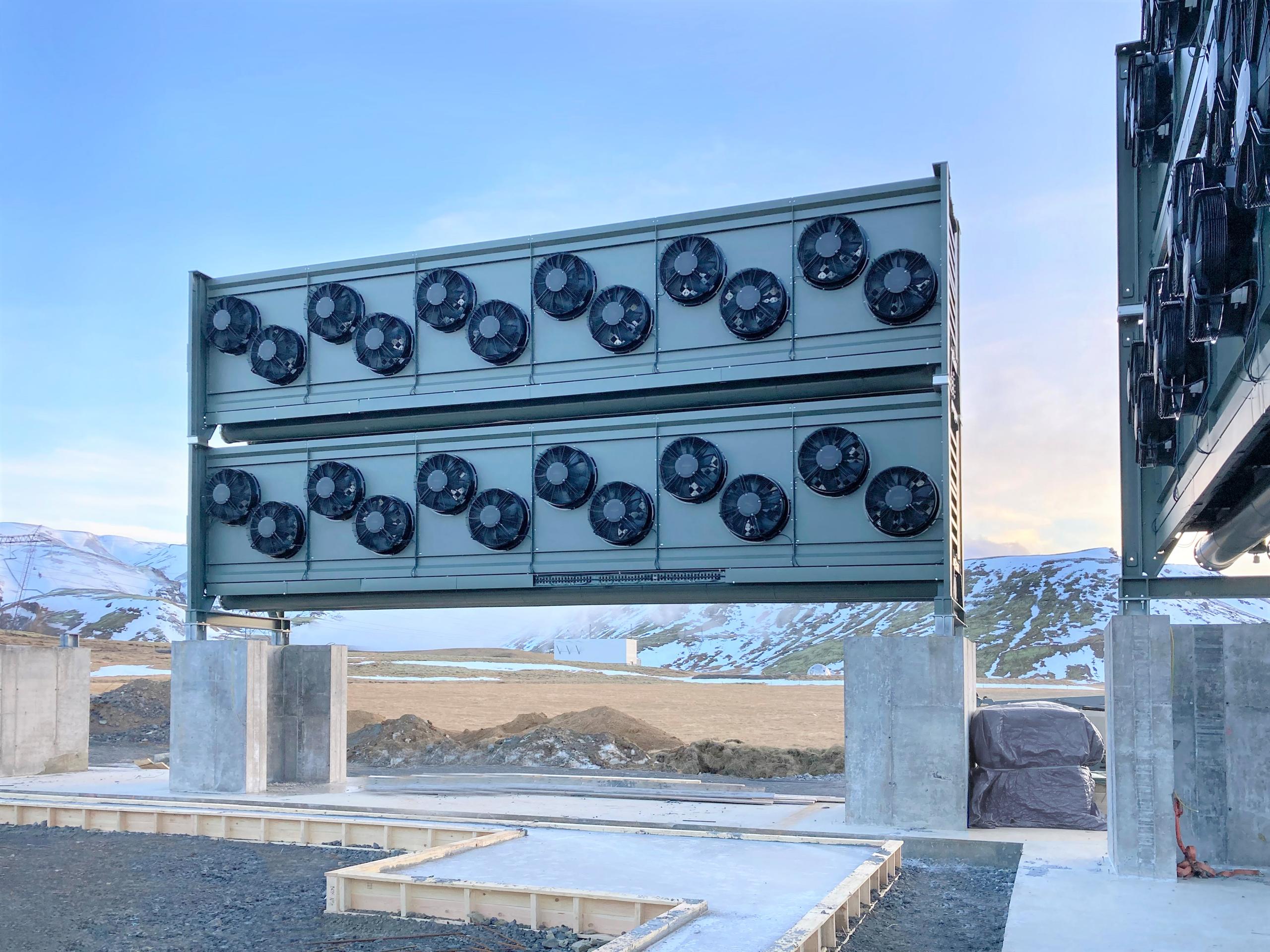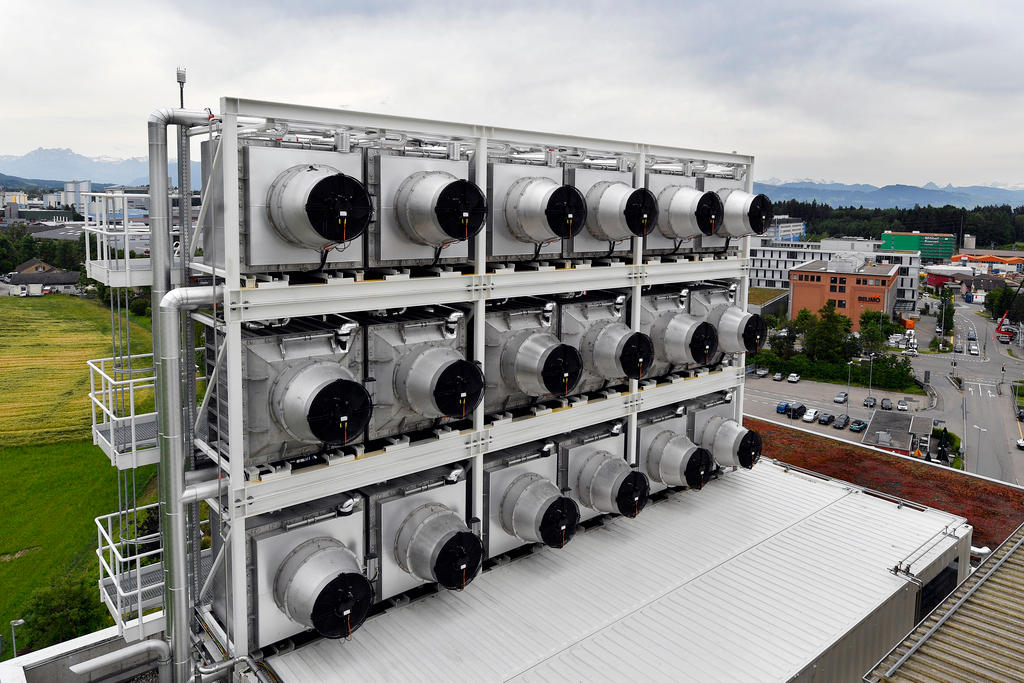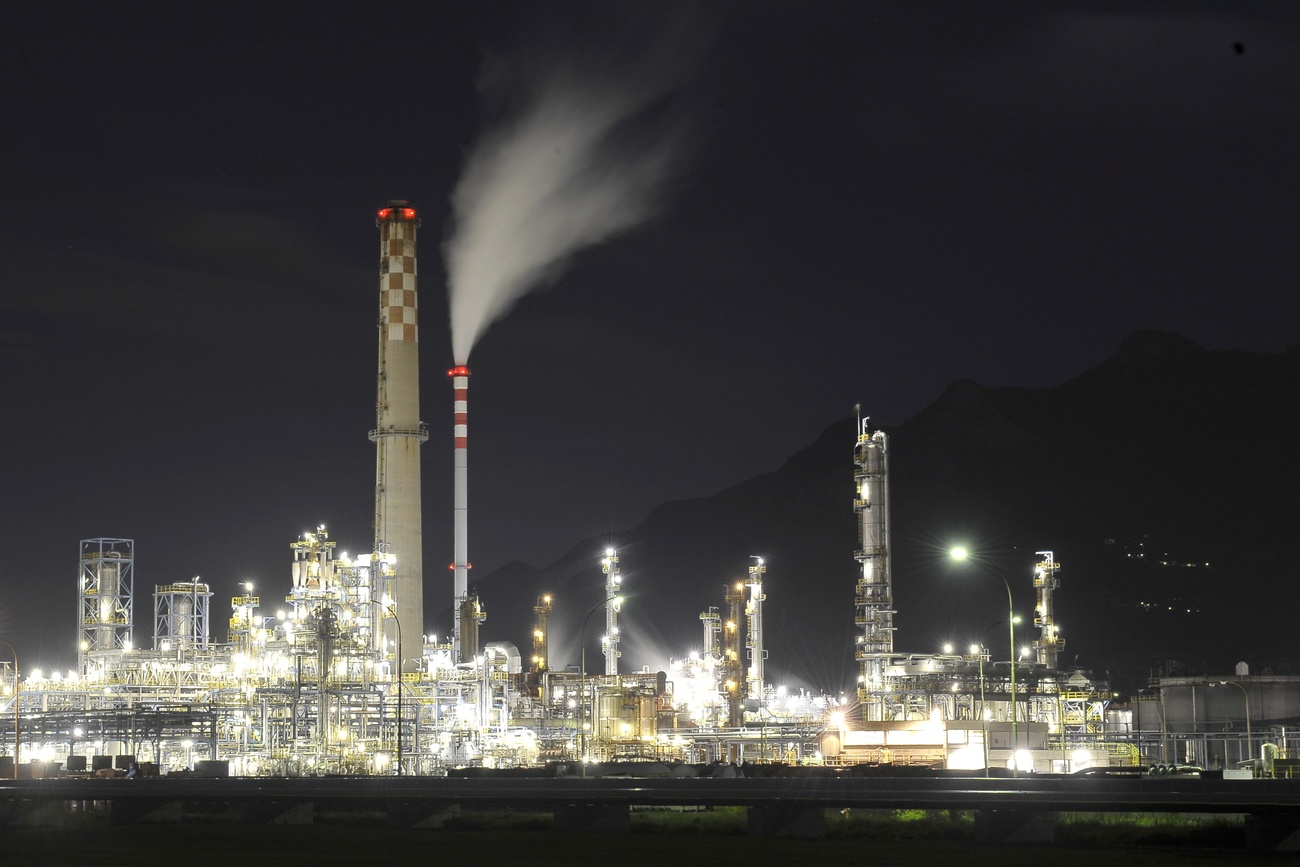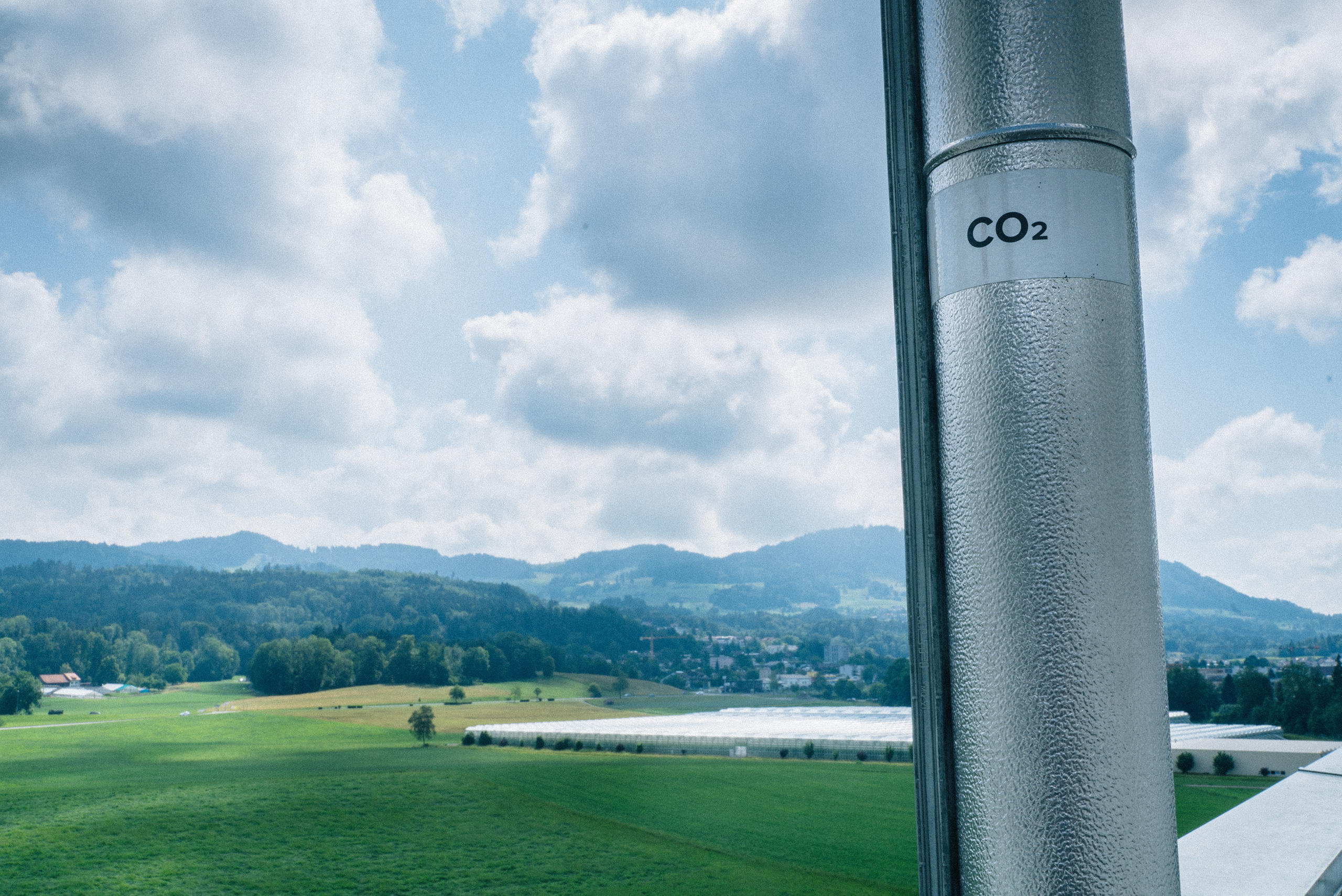
Using Swiss technology to store CO2 in Iceland

The Swiss company Climeworks has just opened in Iceland the world’s largest plant for the capture and permanent storage of carbon dioxide from the air. This technology is deemed essential for combating global warming, yet it raises some questions.
What if, after decades of steady rise, global greenhouse gas emissions finally started to drop?
Such is the hope of Climeworks, world leader in the technology for removing carbon dioxide (CO2) from the atmosphere (known as direct air capture, or DAC). After launching the first industrial plant for the capture and use of CO2 in 2017, the company is now setting a new milestone on the path to climate neutrality.
On September 8 Climeworks inaugurated Orca, the world’s largest facility capable of filtering CO2 from the atmosphere and storing it permanently underground. Located near the Hellisheidi geothermal power plant in Iceland, it will be able to filter up to 4,000 tons of CO2 a year – equivalent to the annual emissions of 600 Europeans.
>> Watch the following video for an aerial view of Orca:
How does it work?
The CO2 is separated from the air using a special filter designed by Climeworks. Following a process developed by the Icelandic firm Carbfix, the gas is then mixed with water and pumped into basaltic rock strata 800 to 2,000 metres below ground, where it should stay for millions of years.
“The combination of pressure, moisture and minerals turns CO2 into rock. We are just accelerating the natural mineralization process,” Christoph Beuttler, head of climate policy at Climeworks, told swissinfo.ch.
The likelihood of a sudden, uncontrollable gas leak from underground is nil, according to Beuttler. “Once in the rock, nothing can release CO2 back into the air; not even an earthquake or a volcanic eruption.”
>> See how CO2 capture and storage work in the following short film:
The choice of Iceland is not accidental. In addition to favourable geological conditions, the country is a trailblazer in the field of geothermal energy. The use of renewable sources is an absolute prerequisite for facilities like Orca, which – of course – only make sense if they generate fewer greenhouse gases than they actually remove from the atmosphere.
Worldwide, there are 15 DAC plants in operation today, which together can capture over 9,000 tons of CO2 a year, according to a 2020 report by the International Energy Agency.
The United Nations Intergovernmental Panel on Climate Change (IPCC) believes such installations will be indispensable if global warming is to be limited to 1.5°C.
Total US solar and wind energy production needed
The solution proposed by Climeworks, in which the US giant Microsoft has also invested, is nonetheless controversial and raises some questions.
If renewable electricity alone is to be used to power DAC plants, it would take the total wind and solar energy produced in the United States in 2018 to capture 100 million tons of CO2, or 1/400 of yearly global emissions, according to a study published in 2020. Moreover, the installations themselves would require an overall surface area greater than Sri Lanka.

More
Newsletters
While recognizing the need to use these technologies, Martine Rebetez, professor of climatology at the University of Neuchâtel, stresses that there are still several unknowns with regard to safety, carbon balance and costs. “At the moment, the cheapest and most urgent step is to stop emitting CO2,” she told the watson.ch portal.
Doing nothing will cost more
Beuttler of Climeworks is in no doubt about the need for action to cut emissions: “It is the most important thing we can do to stop climate change”. However, he adds, at some point mitigation will not be possible or become so expensive, for instance in aviation, that it will be necessary to remove the greenhouse gases from the atmosphere.
The price of inaction, considering the damage caused by natural disasters, would in any case be higher, he warns. “Beyond the costs, negative-emissions technologies are also an opportunity: they will become one of the main industries, creating a lot of jobs. This is a sector where Switzerland, already a world leader in the field, would do well to stay ahead of the game.”

More
Is sucking CO2 from the air the answer to global warming?
Translated from Italian by Julia Bassam

In compliance with the JTI standards
More: SWI swissinfo.ch certified by the Journalism Trust Initiative










































Join the conversation!